Latest Comment
Post Comment
Read Comments
 Suraj Tiwari JNU student. (Express Photo by Gajendra Yadav)
Suraj Tiwari JNU student. (Express Photo by Gajendra Yadav)
Till three years ago, it was life as usual for Suraj Tiwari. His father worked as a tailor in Mainpuri, Uttar Pradesh, where he would rafoo (darn) torn clothes. The income wasn’t much, but Tiwari, 25, and his elder brother both worked as blue-collar employees in big corporate plants, and managed to earn Rs 12,000 per month each to sustain the family.
Then, it all unravelled. Tiwari was in a train on January 29, 2017, when he slipped and fell on the tracks. He was rushed to the AIIMS Trauma Centre, where his treatment lasted four months. At the end of it, he had lost both his legs from knee down, his right arm till the elbow, and two fingers of his left hand. His treatment, he says, cost around Rs 14 lakh, of which around Rs 8 lakh was from a loan taken by his father.
What Hello Kitty and the LOL Cat meme teach us about fake news
 The polarising power of fake news is such that any commentary on it also immediately gets characterised as fake or not. (Photo: Getty Images/Thinkstock)
The polarising power of fake news is such that any commentary on it also immediately gets characterised as fake or not. (Photo: Getty Images/Thinkstock)
It has become difficult to talk about fake news. So powerful is its polarising power that any commentary on fake news also immediately gets characterised as fake or not. However, given the amount of misinformation and dangerous disinformation that we are subjected to daily, it is necessary to find a language and story to understand the key conditions of fake news. And I intend to do it today through cat memes — LOL Cat and Hello Kitty — to see if they might help understand what is at stake.
Amid the BHU professor appointment row, a look at Muslim scholars of Sanskrit in history
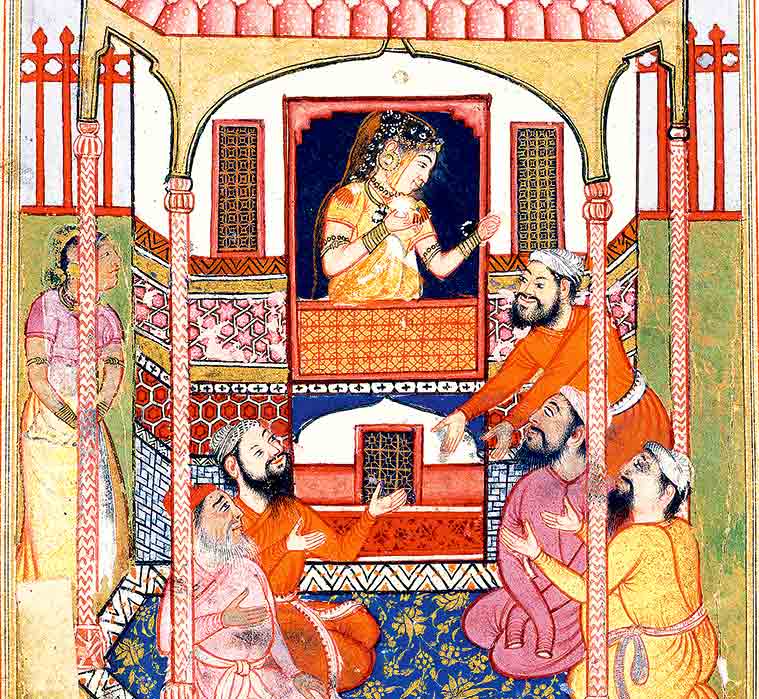 Most probably Firdausi had some knowledge of Sanjeevani herb fetched by Hanuman, as mentioned in Ramayana, which he touched upon in his epic.
Most probably Firdausi had some knowledge of Sanjeevani herb fetched by Hanuman, as mentioned in Ramayana, which he touched upon in his epic.
Is Sanskrit an alien language for the Muslims? Not quite, if one rummages through the history of the subcontinent. It is hard to find any period after the advent of the Muslims without reference to Muslim scholars of Sanskrit. The recent protests against the appointment of a Muslim professor in Sanskrit Vidya Dharma Vigyan department at Banaras Hindu University (BHU), therefore, seem to be the new way of the admirers of Manusmriti, the Vedic text which denigrates lower classes, to wallop the “other”.
How Agnes Kharshiing uses RTI to battle illegal mining in Meghalaya despite the risks
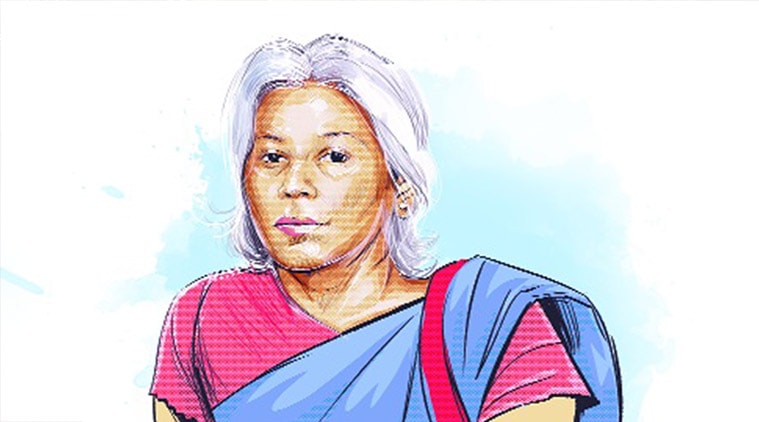 Meghalayan activist Agnes Kharshiing’s efforts were recognised with the 2019 International Hrant Dink award for speaking out against corruption. (Source: Suvajit Dey)
Meghalayan activist Agnes Kharshiing’s efforts were recognised with the 2019 International Hrant Dink award for speaking out against corruption. (Source: Suvajit Dey)
I didn’t know of Madalyn Murray O’ Hair until a feature film on her life, The Most Hated Woman in America dropped on Netflix. She was irreverent; she had a mind of her own, questioned the practice of blindly following social norms and took on those in power. In her case, it was the American government imposing the Lord’s prayer in public school classrooms. For America’s democracy, this was a huge win, as it was for O’ Hair. But for the dominant Christian electorate of 1960s America, she was an anarchist.
When I meet 59-year-old Right to Information ( RTI) activist, Agnes Kharshiing in Shillong, she reminds me of O’ Hair. Kharshiing, who was still bound to her bedroom, had survived a blunt force trauma 7-9 cm deep on the scalp by a mob a year ago when she had been investigating the illegal transportation of coal in Meghalaya.
One place that political parties in Maharashtra aren’t fighting over
 Show Stopper: Sahyadri Guest House in Mumbai. (Source: IMK architects)
Show Stopper: Sahyadri Guest House in Mumbai. (Source: IMK architects)
It’s usually in the news for the wrong reasons, sometimes for not paying its water bill, sometimes for its numerous cell towers that neighbours fear will increase radiation, or even that previous chief ministers have used it as their office. But once the dust settles and one is able to look at this “showpiece of Maharashtra”, the Sahyadri Guest House never fails to impress with its grandeur. Even as guests cool their heels after the recent political theatrics, it’s easily forgotten that this once historic bungalow in Malabar Hill, Mumbai, hosted former chief minister of unified Maharashtra Morarji Desai and Maharashtra state’s first chief minister YB Chavan.
How to Bring Back a Forest
 To approximate the primal poetry that trees evoke in humans, Raman turns to writing and his personal experience, but also to art. (Photo: Jithendra M)
To approximate the primal poetry that trees evoke in humans, Raman turns to writing and his personal experience, but also to art. (Photo: Jithendra M)
The door of TR Shankar Raman’s home in Valparai, Anamalai Hills, offers a view of the distant dome of Anamudi, the highest mountain in the Western Ghats. “The rounded peak, like the head of a giant elephant, hides in haze, nestles in clouds, or rises in austere grace into gin-clear skies, depending on the moods of earth, sky and wind,” he writes in The Wild Heart of India (Oxford University Press), a collection of essays written between 1992 and 2017. Nineteen years ago, it was research that drew the scientist to this rainforest-rich landscape in Coimbatore, Tamil Nadu. But it wasn’t only cold scientific curiosity that made him stay — and make a life here. There was the pull of memory — “As a child, I loved these mountains” — and the question: can the life of a conservationist remain separate from the land and its people?
When the East India Company commissioned art from Indian artists
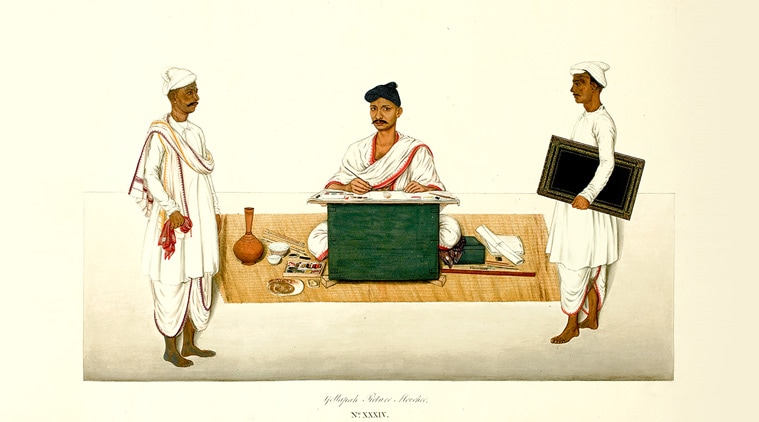 Past forward: An artist’s portrait of Yellapah of Vellore.
Past forward: An artist’s portrait of Yellapah of Vellore.
A 17th century Mughal dagger, with its handle made from a single rock crystal, is part of the treasure trove at the Wallace Collection museum in London. The dagger is ornated with rubies and emeralds in the shapes of birds, flowers and tigers, and inscribed with the name of the East India Company official Claude Martin. When Scottish art historian and writer William Dalrymple’s eyes fell on this dagger in 2018, it urged him to delve deeper into the contributions of Martin, one of the biggest patrons of Indian art in the late 18th century.
The problem with decluttering guru Marie Kondo’s online store
 Kondo, whose curiosity about tidying began early in her childhood had a thriving organising consultancy in Tokyo in her 20s.
Kondo, whose curiosity about tidying began early in her childhood had a thriving organising consultancy in Tokyo in her 20s.
After telling the world to dump it all, Marie Kondo, 34, the goddess of decluttering and Japanese author of international bestseller, The Life-Changing Magic of Tidying Up: The Japanese Art of Decluttering and Organising (2014), launched an online store last week in collaboration with Japanese e-commerce giant Rakuten.
The e-commerce venture (shop.konmari.com), that features around 150 homeware and fashion items, ranging in price from $8 to $300, and currently shipping only within the United States, was met with much criticism on social media. Users called out Kondo for promoting consumerism after having encouraged people to get rid of unnecessary things.
What learning Mandarin has taught me
 The journey so far is like walking down a road and getting hit in the face by vital auxiliary words. (Source: Getty Images)
The journey so far is like walking down a road and getting hit in the face by vital auxiliary words. (Source: Getty Images)
It is a world I only met nine months ago, and I was foolish to think there was only one tricky mountain of vocabulary standing between me and telling great stories from China. Giddy with excitement that I could potentially have access to compelling, poignant, incredible stories in a language spoken by millions of people in the world, I signed up for one-on-one Mandarin lessons.
I am 34 and living in China, and I think this detail is important since my Mandarin-learning niece in Cardiff who is one-fifth my age-corrected my pronunciation over the phone the other day. As an adult language learner, I am curious why our brains pause for what seems like a whole minute to register a transition: when foreign words go from white noise to meaning.
The children’s bestsellers that made adults uncomfortable
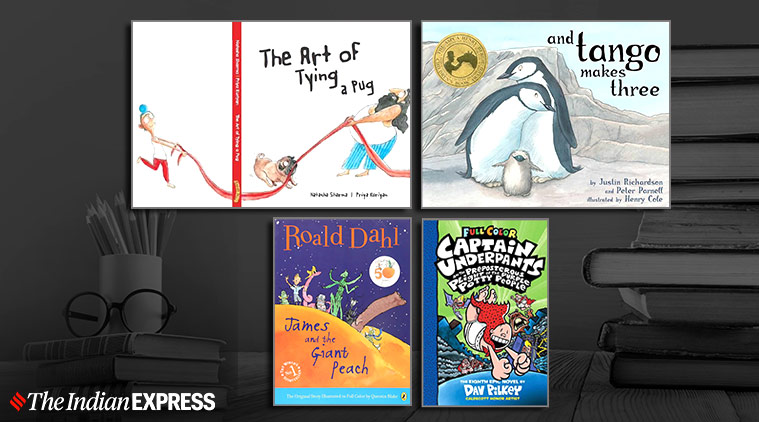 Here are some books that continue to remain bestsellers despite the criticism and censorship they once drew. (Designed by Gargi Singh)
Here are some books that continue to remain bestsellers despite the criticism and censorship they once drew. (Designed by Gargi Singh)
What makes for appropriate reading for children has been a contentious issue in publishing, given the fact that a large number of books that go beyond normative themes are often met with resistance — not as much from children as from those who arbite what is age-appropriate reading for them — parents, teachers and other authority figures. From Mark Twain’s Huckleberry Finn to JK Rowling’s pathbreaking Harry Potter series, there’s a long list of children’s fiction which have found themselves on the wrong side of adult censorship. Often though, deviant may also mean diverse. Here are some books that continue to remain bestsellers despite the criticism and censorship they once drew.
We are all wonders, says bestselling children’s author Dav Pilkey
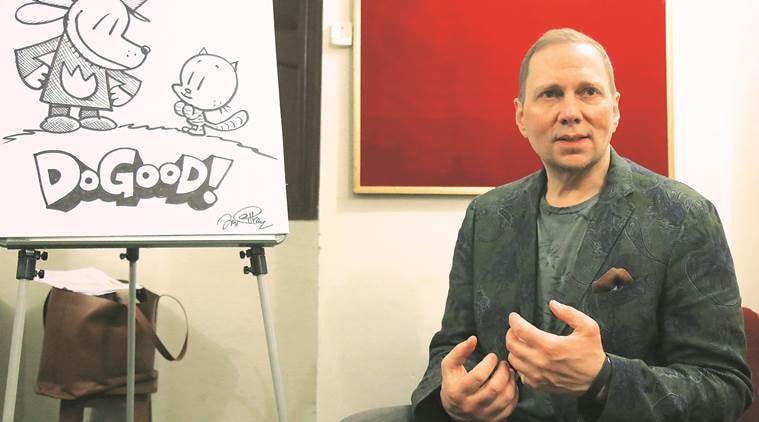 Author Dav Pilkey at The Royal Opera House in Mumbai. (Express photo by Nirmal Harindran)
Author Dav Pilkey at The Royal Opera House in Mumbai. (Express photo by Nirmal Harindran)
How do I make my child a better reader?” It’s a question Dav Pilkey, creator of the hugely successful Captain Underpants and the Dog Man series (Scholastic), the Super Diaper Baby series, apart from several other books, including The Paper Boy (a picture book for which he won the Caldecott honour for his artwork in 1997), is all too familiar with. Dog Man — a franchise that has sold millions — sits right on top of The New York Times bestsellers’ list for children’s series, while Captain Underpants is at No. 8 (both books have sat on the list for years). The Dog Man series has more than 26 million copies in print to date.
Down In Jungleland: A Clean Bill of Health
 Birds are especially particular about personal hygiene — they have to keep their feathers in tip-top nick if they are to fly. (Photo by Ranjit Lal)
Birds are especially particular about personal hygiene — they have to keep their feathers in tip-top nick if they are to fly. (Photo by Ranjit Lal)
It beggars belief: Here we are, the most intelligent species of life on the planet — or so we think — with mighty brains brilliant with ideas — and, yet, we’re the only species of life that completely mucks up its own (and, sadly, all other life forms’) environment. And on such a scale that it threatens existence.
You may say, animals pollute and dirty their surroundings. They’re into open defecation (like we aren’t). They’ll just squat and do it whenever they feel like it. But anyone who has kept dogs or cat as pets will know that’s not exactly true. When my crazy labrador Wag was a puppy, and found that he suddenly had to go very early in the morning and couldn’t wake me up he would go to the corner farthest from his bed, or desperately scratch at the door. Later, when as a grown-up he was taken to the Ridge, he would assiduously seek out the “compost-pits” (basically trash piles) and finish his jobs there.
Families in Food: The delicious halwas of Lucknow’s Rehmat Ali Sweets Corner
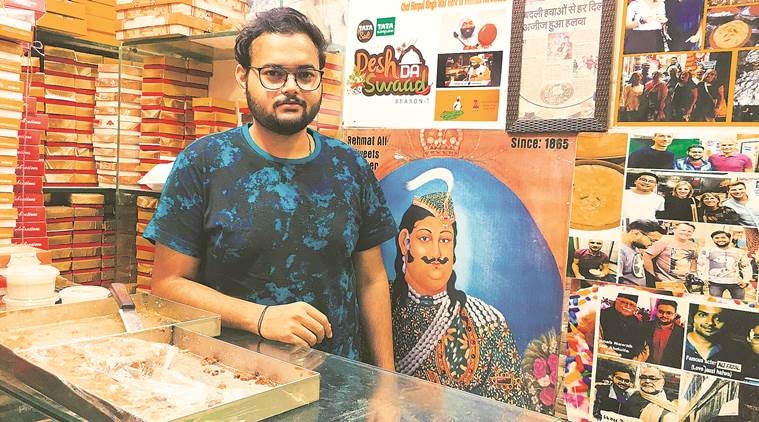 Sweet maker Mohammad Saif in his shop. (Photo by Asad Rehman)
Sweet maker Mohammad Saif in his shop. (Photo by Asad Rehman)
Mohammad Saif, co-owner of Rehmat Ali Sweets Corner in Chowk area’s narrow but astir “phool waali gully” in old Lucknow, is busy slicing pieces of halwas and packing it into plastic boxes of different sizes. In front of him sit trays full of sunset-yellow halwa, cut into cubes, sprinkled with dry fruits and a delicate sliver of silver. The halwas, dripping with ghee, look rich.
The sweets shop, run by Saif, 23, and brother Mohammad Aamir, 25, was started in 1865 by their great-grandfather Roshan Ali, nine years after the tenth and last nawab of Awadh Wajid Ali Shah lost power and migrated to Calcutta. Ali was a chef for the nawab’s family, but after the dethronement in 1856, Saif says his great-grandfather, too, was without a job.


